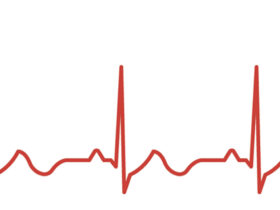An abdominal aortic aneurysm (AAA) is a serious condition that occurs when the aorta, the main blood vessel that carries blood from the heart to the rest of the body, becomes weakened and bulges outward. This bulge, or aneurysm, can grow over time and, if left untreated, can rupture, leading to life-threatening internal bleeding. Being aware of the symptoms and causes of AAA is crucial for early detection and proper management of the condition.
Symptoms of Abdominal Aortic Aneurysm
One of the most concerning aspects of AAA is that it often goes unnoticed until it ruptures or causes complications. Many people with AAA do not experience any symptoms, especially in the early stages. However, there are some potential signs and symptoms that may indicate the presence of an aneurysm:
1. Abdominal Pain or Discomfort: Some individuals with AAA may experience a deep, persistent pain or throbbing in the abdomen, lower back, or groin area. The pain may be severe or dull and may come and go.
2. Pulsating Mass in the Abdomen: In some cases, a pulsating mass or lump may be felt in the abdomen, especially near the navel or just below it. This mass is caused by the bulging aorta.
3. Back Pain: Persistent back pain, particularly in the lower back, can be a symptom of AAA, as the aneurysm may put pressure on the surrounding structures.
4. Leg Pain or Numbness: If the aneurysm is pressing on nearby nerves, it can cause leg pain, numbness, or weakness, especially in the calves or thighs.
5. Rapid Heartbeat or Shortness of Breath: In rare cases, a large AAA may cause a rapid heartbeat or difficulty breathing due to the increased pressure on the surrounding organs.
It’s important to note that many of these symptoms can also be associated with other medical conditions, so it’s essential to consult a healthcare professional for a proper diagnosis.
Causes of Abdominal Aortic Aneurysm
Several factors can contribute to the development of an abdominal aortic aneurysm. While the exact cause is not always known, some of the most common risk factors include:
1. Age: AAA is more common in people over the age of 65, as the aortic walls can weaken with age.
2. Smoking: Smokers have a significantly higher risk of developing AAA compared to non-smokers. Smoking can damage the aortic walls and increase inflammation, weakening the vessel over time.
3. High Blood Pressure: Uncontrolled high blood pressure can put additional strain on the aortic walls, increasing the risk of aneurysm formation.
4. Atherosclerosis: The buildup of fatty deposits (plaque) in the arteries, a condition known as atherosclerosis, can weaken the aortic walls and contribute to the formation of an aneurysm.
5. Family History: Having a close relative with an AAA increases an individual’s risk, suggesting a possible genetic component.
6. Male Gender: AAA is more common in men than women, although the reasons for this are not fully understood.
7. Trauma or Injury: Severe trauma or injury to the abdomen can potentially damage the aorta and lead to the development of an aneurysm.
Prevention and Early Detection
While some risk factors for AAA are unavoidable, such as age and family history, there are steps individuals can take to reduce their risk and increase the chances of early detection:
1. Quit Smoking: Quitting smoking is one of the most effective ways to lower the risk of developing AAA and other cardiovascular conditions.
2. Manage Blood Pressure: Maintaining healthy blood pressure levels through lifestyle changes (diet, exercise, and medication if necessary) can help prevent the formation of an aneurysm.
3. Regular Screenings: For individuals at increased risk, such as men over the age of 65 who have smoked, regular screening with an abdominal ultrasound or CT scan can detect AAA at an early stage.
4. Adopt a Healthy Lifestyle: Maintaining a balanced diet, exercising regularly, and managing stress can contribute to overall cardiovascular health and potentially lower the risk of AAA.
Early detection and proper management of an abdominal aortic aneurysm are crucial for preventing potentially life-threatening complications. If you experience any of the symptoms mentioned or have concerns about your risk factors, it is essential to consult a healthcare professional for evaluation and appropriate treatment recommendations.
Vascular and Vein Center at Gulfcoast Surgeons has been one of the most respected vein clinics in Southwest Florida for over 30 years. Our surgeons, Dr. Abraham Sadighi, Dr. Johan Escribano, and Dr. Vijayakumar Tanjavur have performed thousands of vascular and vein surgeries with consistently positive outcomes.
We focus on diseases of the vascular system that can range from harmless but unattractive spider veins to dangerous conditions such as peripheral artery disease. Our caring and dedicated team will help you identify problems and offer the best treatment options for you.
Vascular and Vein Center at Gulfcoast Surgeons
877-LEG-PAIN
gulfcoastsurgeons.com
Fort Myers
8010 Summerlin Lakes Dr., Ste. 100
Fort Myers, FL 33907
Cape Coral
1003 Del Prado Blvd., Ste. 303
Cape Coral, FL 33990
Bonita Springs
24301 Walden Center Dr., Ste. 102
Bonita Springs, FL 34134









